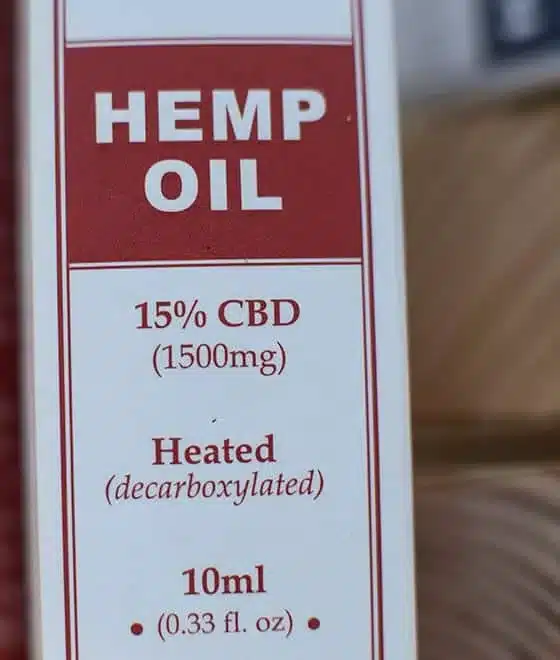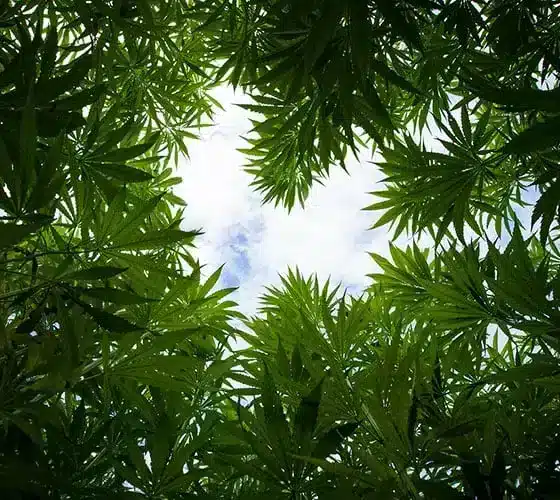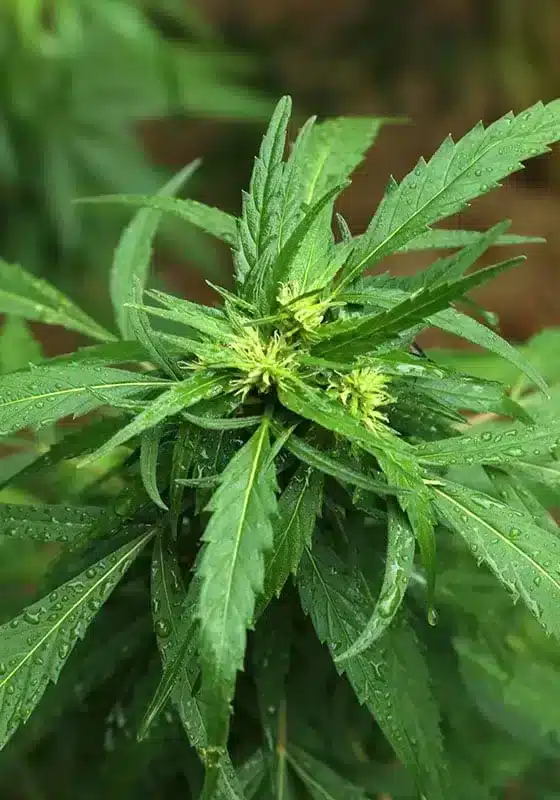What is CBD? What is cannabidiol?
It was at the Noyes Chemical Laboratory at the University of Illinois in the 1940s that chemists Roger Adams, Madison Hunt and JH Clark first isolated cannabidiol (CBD). Prior to their experiments, cannabinol (CBN) was the only cannabinoid discovered in the cannabis plant. Scientists had found the CBN in hash samples from India, and it was exactly this compound that the chemists were looking for in wild hemp in Minnesota. The hemp top shot was extracted with ethanol and distilled in a laboratory. The product became a reddish oil. The scientists were shocked that they found no CBN, but at the same time their quality tests showed that there were other residual compounds (phenols) in the red oil. Subsequently, a large number of quality tests were reviewed to define the structure of CBD. Roger Adams wondered if there would be structurally related compounds in CBN and CBD, in cannabis. It turned out to be right, as lots of connections, incl. THC, later extracted and characterized from the cannabis plant. According to International Union and Pure and Applied Chemistry (IUPAC), the chemical name for cannabidiol is 2 - [(1R, 6R) -3-methyl-6-prop-1-en-2-ylcyclohex-2-en-1-yl] -5-pentylbenzene-1,3-diol. This name is (besides being a big mouthful) the precise description of the chemical structure of cannabidiol, as it describes all the functional groups in the structure of the cannabidiol.


CBD biosynthesis
Cannabinoids are produced in two ways; the polyketide method (origin of olive tolic acid) and the plastid MEP method (origin of geranyl pyrophosphate). An enzyme called geranyl pyrophosphate:olivetolate geranyltransferase catalyzes the reaction between geranyl pyrophosphate and olivetolic acid to produce cannabigerolic acid (CBGA). An oxide cyclase called CBDA synthase does a stereospecific oxidative cyclization on CBGA to make CBDA. CBDA is subsequently decarboxylated to make CBD. This happens partly in the plant, as well as part of the manufacturing process during the production of CBD.
Antibacterial activity in cannabis, paves the way for the discovery of mysterious molecule
Krejčí and Šantavý, at Palacky 'University in Olomouc, Czechoslovakia, found that an alcohol extract of a cannabis plant showed antibacterial activity. They subsequently demonstrated that the molecule that created the antibacterial activity was cannabidiolic acid (CBDA), the precursor of CBD. This was the first cannabinoid acid discovered in the cannabis plant, and this paved the way for us to understand, for the biosynthetic pathway cannabinoids go, as we have today.
Chemical key proportions
The two hydroxal groups in the CBD allow it to act as a linker and acceptor for hydrogen. However, there is not enough polarity in the molecule to be dissolved in polarity-neutral environments, such as water. Fortunately, CBD is soluble in liquid carbon dioxide, which is an environmentally friendly solvent often used in the manufacture of CBD. The melting point of CBD is 66 degrees Celsius and therefore CBD is crystallized and solid at room temperature. The boiling point is 180 degrees Celsius for CBD and the boiling point for THC is 157 degrees Celsius. Due to the high melting and boiling temperatures, the evaporation temperature is incredibly high (significantly higher than 180 degrees Celsius) which is relevant for those users who prefer to take CBD as a gaseous form through the lungs.
Cannabidiol absorbs light in the ultraviolet region and has a peak absorption at 275 and 209 nm. The apexes are characteristic of phenolic compounds, and since CBD is a terpenephenolic compound, it has maximum light absorption at exactly these points. When exposed to light, an electron will change its position from the highest occupied molecular circuit (HOMO) to the lowest occupied molecular circuit (LUMO). Since CBD has two peaks in the UV spectrum, two electrons will shift their positions. The energy from the two-electron shifts is proportional to the wavelength of light, according to theoretical physicist Max Planck's calculation.
The color of any object is determined by the wavelength of light that the object absorbs, transmits and more importantly reflects. Since pure CBD crystals are white, it can be deduced that CBD can reflect all the colors of the light spectrum (400nm to 700nm). This is known because if is a combination of all wavelengths of light.


The degradation of CBD and CBDA
In 1974, two prominent cannabinoid scientists Arnon Shani and Raphael Mechoulam isolated two molecules called cannabielsoic acid A (CBEA-A) and cannabielsoic acid B (CBEA-B) from hashish. Through further experimentation, they were able to deduce that these compounds were created through oxidative cyclization of CBDA, a reaction activated by light. Furthermore, as time went on and the cannabis plant was exposed to higher-intensity light, CBDA was degraded to CBEA-A or CBEA-B. These degradations create cannabinoid cannibelsoin (CBE) by decarboxylation. CBE was identified as a CBD metabolite following an experiment on guinea pigs, but no pharmacological activities have been conducted since then.
